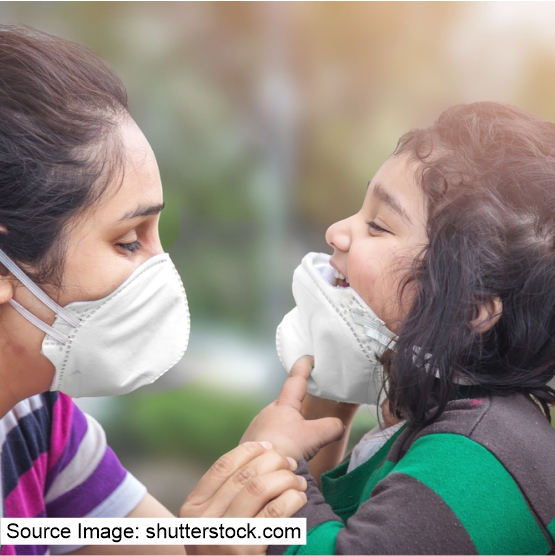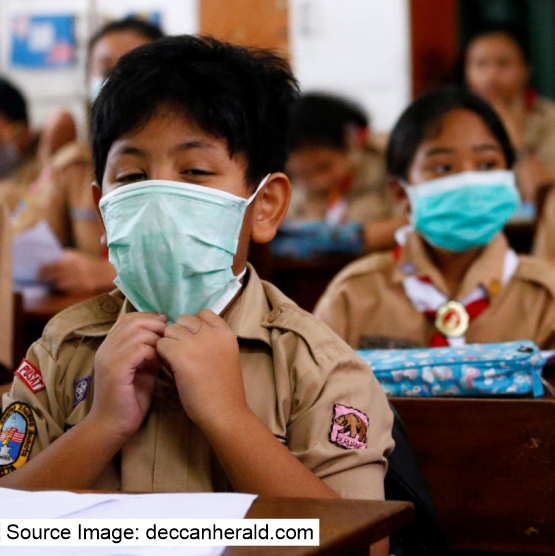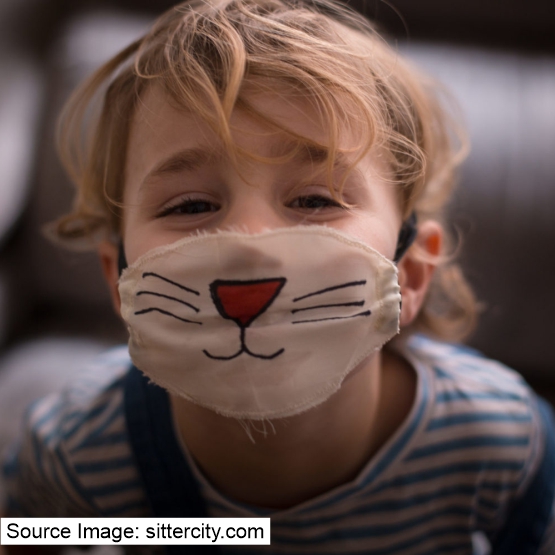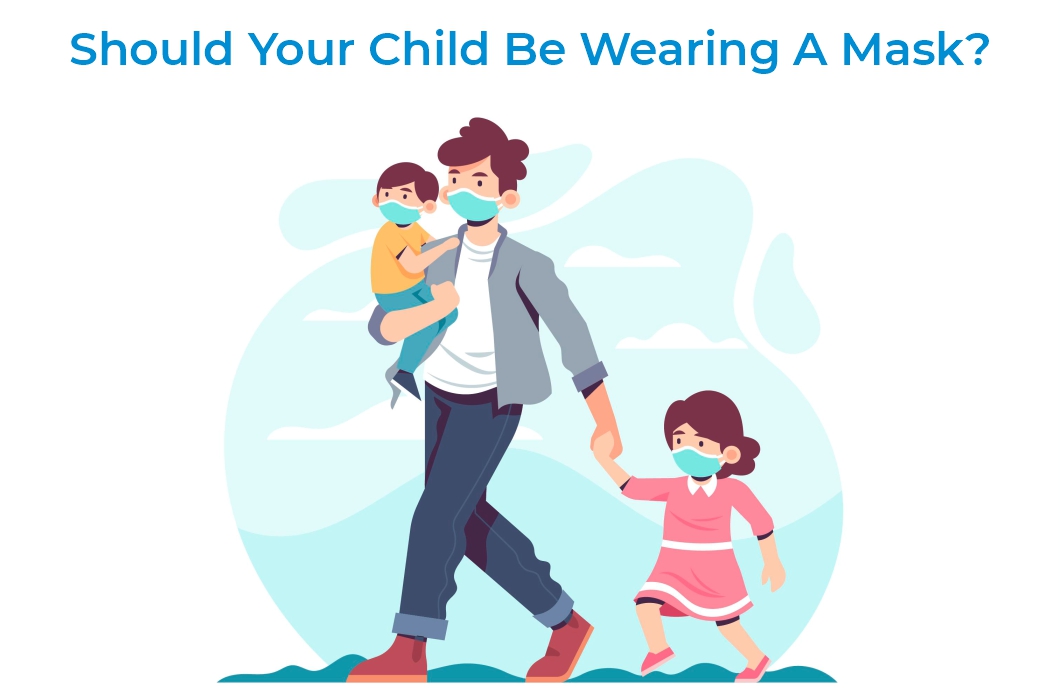With schools taking steps to reopen as the number of COVID infections remain manageable, the questions over masking children, such as:
Should young children wear a mask?
How long to mask a child?
When are they allowed to remove it?
Whether masks would allow them to breathe enough oxygen or trap too much carbon dioxide?
are asked by many parents around the world as they try to prevent new waves of COVID-19, while also allowing children to develop, socialize and thrive emotionally. With COVID-19 vaccinations for children aged below 15 yet to begin, their only lines of defense are face masks, hand sanitization, and physical distancing.
How Do Masks Help?
COVID-19 can spread when people breathe, talk, cough, or sneeze. A well-fitted mask keeps the virus from reaching others. It can also protect the person wearing a mask from becoming infected. Masks also stop people from touching their mouths and faces with contaminated hands, which is another way for the virus to spread.
Should Children Wear Masks?

The WHO (World Health Organization) says children under the age of five need not necessarily wear masks due to the risk of suffocation. Children are fidgety at that age and are unlikely to be able to wear them correctly for a long period of time or safely discard them. However, there are exceptions. If the child is sick or in contact with someone who is unwell, they should wear a mask under adult supervision. Face masks are essential during the ongoing COVID?19 pandemic.
WHO and UNICEF(United Nations Children’s Funds) advise that the decision to use masks for children aged 6-11 should be based on the following factors:
- Whether there is widespread transmission in the area where the child resides
- The ability of the child to safely and appropriately use a mask
- Access to masks, as well as laundering and replacement of masks in certain settings (such as schools and childcare services)
- Adequate adult supervision and instructions to the child on how to put on, take off and safely wear masks
- The potential impact of wearing a mask on learning and psychosocial development, in consultation with teachers, parents, caretakers, and medical providers
- Specific interactions the child has with other people who are at high risk of developing a serious illness, such as the elderly and those with other underlying health conditions
- Masks can foster germs if they become moist or cause unhealthy levels of carbon dioxide. But experts say washing masks routinely keep them safe and clean.
- Some argue that young children miss important visual and social cues that enhance learning and development when their classmates and teachers are wearing masks. But others note that children with vision or hearing impairment learn to adapt and that other children can, too.
- Block germs well: A mask should have multiple layers, and it should not have any holes or openings. Cloth and surgical masks are much less useful against omicron. The best germ-blockers are called "respirators." These have been tested and meet high filtration standards. Look for them with names like KN95 or KF94.
- Fit snugly: Masks should cover both the nose and mouth and have no gaps on the sides.
- Be comfortable: Any mask worn comfortably is better than no mask at all. If a respirator is not comfortable, try a surgical mask, or a surgical mask with a cloth mask on top. The surgical mask gives better filtration and the cloth mask helps to hold the edges of the surgical one better to the child’s face.
- Teach kids how to put masks on and take them off: Remind them not to touch the front of the mask or pull it under the chin, into the mouth. It should always cover the nose and mouth. They should handle masks by the ear loops and ties so that the mask does not get dirty.
- Always keep an extra: Parents and guardians should give their children two to three spare masks so that if one is soiled, misplaced, or becomes wet, the other can be used.
- Make it fun and personal: You can find fun, colorful masks in many stores. Look for ones with superhero characters, favorite movies, silly faces, or animal prints. A personal touch can help make masks a more normal part of their routine.
- Maintain at least a 1-meter distance from others
- Provide access to hand hygiene facilities
WHO and UNICEF advise that children aged 12 and over should wear a mask under the same conditions as adults, especially when they cannot guarantee at least a 1-meter distance from others and there is widespread transmission in the area.
However, parents are increasingly expressing concerns about whether face masks might be physically harmful. To answer their questions, the researchers will have to ask children to remove their masks for a random trial, which would be unsafe. Most research on masking is based on past real-life observations that can be more easily brought up to argue over mask mandates.
Here are some arguments brought up by parents on whether to mask children:
We do not know for sure that masks have no developmental effects, but we do know that there are adverse effects from not trying to stop the transmission of the COVID virus.
Parents' frustration and concern over masking children are understandable, but the evidence against the same is not there. There is no data yet to suggest that there are any short-term or long-term harms or psychological and physical harm when it comes to masks and children. Wearing a mask does not raise the carbon dioxide (CO2) level in the air you breathe. Cloth masks and surgical masks do not provide an airtight fit across the face. CO2 molecules are small enough to easily pass through mask material. In contrast, the respiratory droplets that carry the virus that causes COVID-19 are much larger than CO2, so they cannot pass as easily through a properly designed and properly worn mask.
What Type of Masks Should Children Wear?

Some children find face masks uncomfortable, they may not fit their small faces well and they need to be replaced often. There are some recommended, high-quality, child-size masks on the market. But most of the others are of lower quality than the adult versions. Respirators offer excellent protection.
For masks to be most effective, they should:
Wash cloth masks often, and throw out disposable masks after use. Respirators can usually be reused a few times until they are dirty or damaged and no longer fit snugly. Store these in a paper bag between uses.
To Help Children Wear Masks:

Note: Children should not wear a mask when playing sports or doing physical activities, such as running, jumping, or playing on the playground, so that it doesn’t compromise their breathing. When organizing these activities for children, it is important to encourage all other essential public health measures:
Conclusion
There is no sign that masking keeps children from developing socially, physically, or mentally. Over the course of two years, evidence shows that masking children help schools and colleges stay open by reducing the number of COVID cases. Blaming masks for the depression and anxiety in children arises from a natural want to protect them. It is because people were assured of a mask-free world after the vaccinations. Thus, until vaccines become available for children below 15, masking still has a role to play in COVID protection for them.
